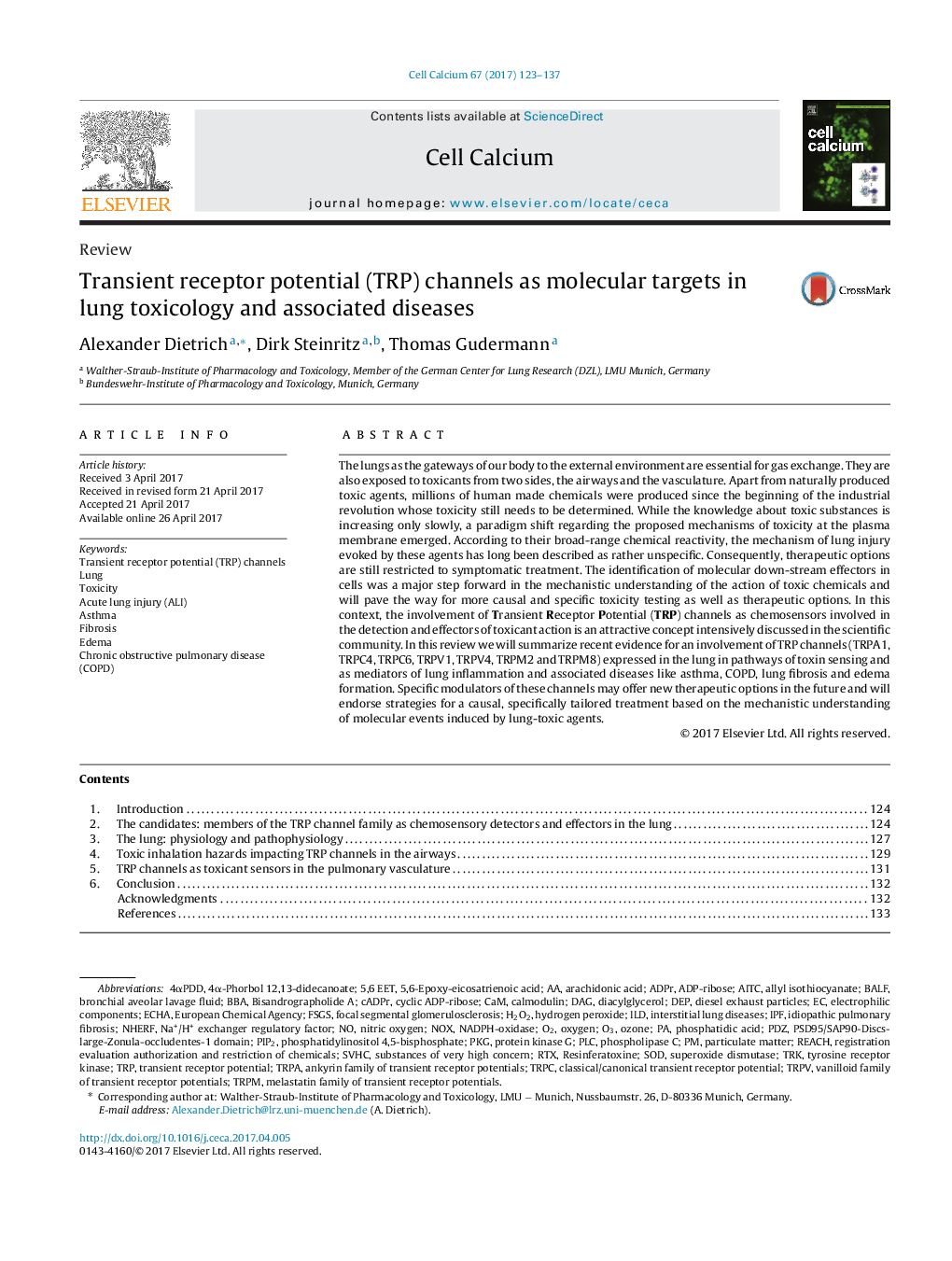| Article ID | Journal | Published Year | Pages | File Type |
|---|---|---|---|---|
| 5530498 | Cell Calcium | 2017 | 15 Pages |
â¢TRPA1, TRPC4, TRPC6, TRPM2, TRPM8, TRPV1 and TRPV4 are the most prominently expressed TRP channels in lung tissues.â¢TRPA1, TRPM2, TRPM8, TRPV1 and TRPV4 are important toxicant sensors in the lung airways and the pulmonary vasculature.â¢TRPC4 and TRPC6 are essential downstream targets in toxicant sensing pathways in the lung.â¢Specific modulators of these channels may offer new therapeutic options after injury by lung-toxic agents in the future.
The lungs as the gateways of our body to the external environment are essential for gas exchange. They are also exposed to toxicants from two sides, the airways and the vasculature. Apart from naturally produced toxic agents, millions of human made chemicals were produced since the beginning of the industrial revolution whose toxicity still needs to be determined. While the knowledge about toxic substances is increasing only slowly, a paradigm shift regarding the proposed mechanisms of toxicity at the plasma membrane emerged. According to their broad-range chemical reactivity, the mechanism of lung injury evoked by these agents has long been described as rather unspecific. Consequently, therapeutic options are still restricted to symptomatic treatment. The identification of molecular down-stream effectors in cells was a major step forward in the mechanistic understanding of the action of toxic chemicals and will pave the way for more causal and specific toxicity testing as well as therapeutic options. In this context, the involvement of Transient Receptor Potential (TRP) channels as chemosensors involved in the detection and effectors of toxicant action is an attractive concept intensively discussed in the scientific community. In this review we will summarize recent evidence for an involvement of TRP channels (TRPA1, TRPC4, TRPC6, TRPV1, TRPV4, TRPM2 and TRPM8) expressed in the lung in pathways of toxin sensing and as mediators of lung inflammation and associated diseases like asthma, COPD, lung fibrosis and edema formation. Specific modulators of these channels may offer new therapeutic options in the future and will endorse strategies for a causal, specifically tailored treatment based on the mechanistic understanding of molecular events induced by lung-toxic agents.
Graphical abstractDownload high-res image (109KB)Download full-size image
